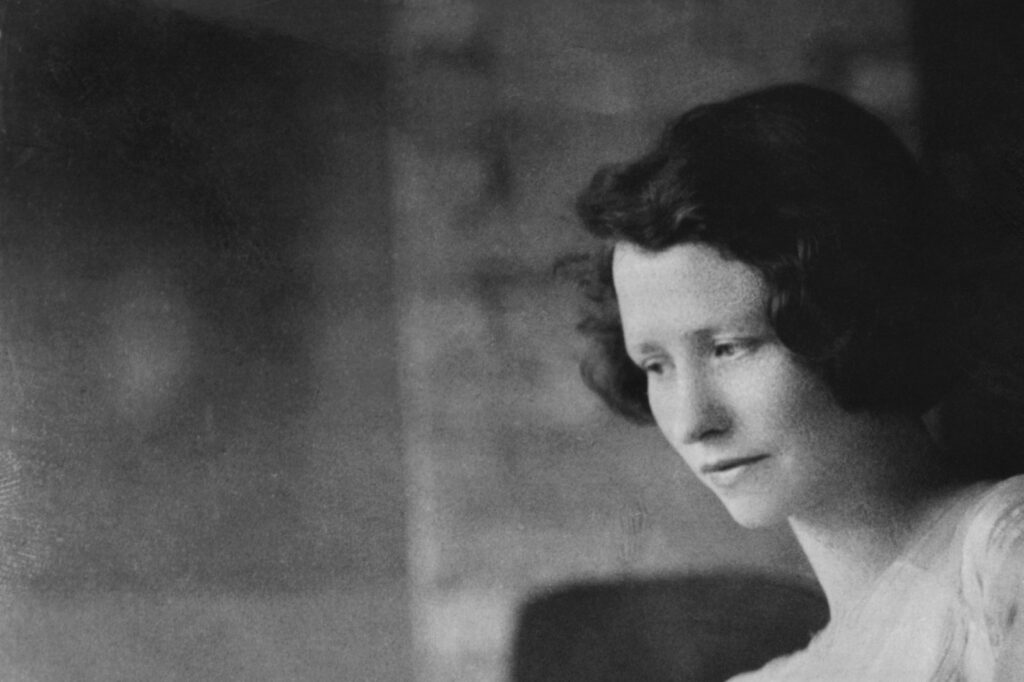NaPoWriMo, also known as National Poetry Writing Month, is an annual creative writing challenge taking place every April. The purpose of NaPoWriMo is to inspire and encourage individuals to write poetry by providing them with a structured and supportive platform to do so.
The challenge requires participants to write one poem a day for the entire month of April. Participants are free to choose any theme or form for their poems; the challenge is open to poets of all levels and backgrounds.
The purpose of NaPoWriMo extends beyond just the writing of poetry. Additionally, NaPoWriMo seeks to promote the value and importance of poetry as an art form and encourage individuals to explore and experiment with the different forms and styles of poetry. The challenge also aims to foster a sense of community and camaraderie among poets, as participants are encouraged to share their work with each other and provide feedback and support.
NaPoWriMo has become an integral part of the poetry community and continues to inspire and encourage poets of all levels and backgrounds to explore and experiment with the art of poetry. In addition to the official NaPoWriMo challenge, numerous organizations and communities have established their versions of the challenge, including schools, libraries, and writing groups. Overall, NaPoWriMo serves as a celebration of poetry, creativity, and community, providing a space for poets to come together and express themselves through their art.
Origin of NaPoWriMo
NaPoWriMo was first established in 2003 by poet and writer Maureen Thorson, who was inspired by the National Novel Writing Month (NaNoWriMo) challenge, which requires participants to write a novel of 50,000 words in 30 days. Since then, NaPoWriMo has gained a global following, with thousands of poets from around the world participating in the challenge each year.

The first official NaPoWriMo event took place in April 2003, with Thorson challenging herself and a few friends to write one poem daily for the entire month. The challenge quickly gained popularity through online blogging communities and forums, and by 2009, NaPoWriMo had its official website.
Since then, NaPoWriMo has continued to grow in popularity and influence, with thousands of poets from around the world participating in the challenge each year. The challenge has also evolved with the inclusion of daily writing prompts, virtual writing workshops, and other resources designed to support and inspire participants.
The role of the internet was instrumental in spreading NaPoWriMo to a broader audience. Online blogging communities and social media platforms such as Twitter and Facebook helped to amplify the challenge’s message, making it accessible to poets from around the world. This helped to create a sense of global community, with poets sharing their work and connecting with others who shared their passion for poetry.
Evolution & Impact of NaPoWriMo
Since its inception in 2003, NaPoWriMo has undergone various changes and adaptations to cater to the growing number of participants and provide a more diverse and inclusive platform for poets. Some of the significant changes and adaptations made to NaPoWriMo over the years are as follows:
- Daily Prompts: In the early years of NaPoWriMo, participants were left to their own devices to come up with daily prompts. However, in 2007, the first official set of prompts was introduced on the NaPoWriMo website, providing writers with a starting point or a source of inspiration for their daily poems. Since then, daily prompts have become an integral part of the challenge, with a new prompt provided every day to encourage writers to experiment with different themes, styles, and techniques.
- Community Building: Over the years, NaPoWriMo has evolved into a community-building event, with participants encouraged to share their work with others and provide feedback and support. This has been achieved through various online platforms, including social media, writing forums, and blogs. In addition, NaPoWriMo has also spawned numerous local and regional writing groups and events, which provide poets with an opportunity to connect and collaborate with others in their communities.
- Inclusivity: NaPoWriMo has made conscious efforts to be more inclusive and diverse in its approach, with a focus on encouraging participation from writers of all backgrounds, abilities, and levels of experience. This has been achieved through various initiatives, such as providing translations of daily prompts into different languages, offering accessible resources for writers with disabilities, and promoting the work of marginalized and underrepresented writers.
The impact of NaPoWriMo on the poetry community and writing culture has been significant. It has helped to raise the profile of poetry as an art form, encouraging individuals to explore and experiment with different forms and styles of poetry.
Moreover, NaPoWriMo has also played a vital role in promoting the accessibility and democratization of poetry. By providing a free and accessible platform for poets to write, share and receive feedback, NaPoWriMo has helped to break down the barriers that may have previously discouraged aspiring poets from pursuing their craft.
Recommended Read – 10 Beautiful Must-Read Poetry Collections by Contemporary Women Poets
The role of social media in the growth of NaPoWriMo has been significant. Platforms such as Twitter, Facebook, and Instagram, and their use of hashtags such as #NaPoWriMo and #NationalPoetryWritingMonth have helped to create a sense of community among poets, enabling them to connect and share their work with others.
In conclusion, NaPoWriMo has evolved from a personal challenge to a global event that encourages creativity, community building, and inclusivity. Its impact on the poetry community and writing culture has been significant, promoting the accessibility and democratization of poetry and providing a supportive platform for writers to connect and collaborate with others. The role of social media has been instrumental in the growth of NaPoWriMo, making it accessible to poets from around the world and creating a sense of global community among writers.
NaPoWriMo Around the World

NaPoWriMo has become a global phenomenon, celebrated by poets from around the world. Each year, writers from around the globe come together to participate in this month-long challenge and celebrate the art of poetry. Here are some inspirational examples of how NaPoWriMo has been celebrated in different parts of the world, particularly in India.
In India, NaPoWriMo has gained significant popularity over the years, with writers from different regions and languages coming together to celebrate the challenge. Many poets in India use this platform to showcase their work, experiment with different styles and themes, and connect with other poets. In particular, NaPoWriMo has helped to bring attention to the diverse range of Indian languages and their unique poetic traditions. For instance, poets who write in Hindi, Bengali, Tamil, Kannada, and other languages have participated in NaPoWriMo, bringing their unique voices and perspectives to the global poetry community.
One of the unique ways in which NaPoWriMo is celebrated in India is through poetry readings and events. Local poetry clubs and writing communities often organize events where poets can come together to share their work and collaborate with others. These events provide a platform for poets to showcase their work and connect with other writers, strengthening the sense of community and camaraderie among poets.
NaPoWriMo has also helped to promote cross-cultural exchange and dialogue. Many poets from India have used this platform to explore themes and issues that are relevant to their culture and experience. For instance, some poets have written about the impact of colonization, the struggles of marginalized communities, and the beauty of Indian art and culture. By sharing their work with the global poetry community, these poets have helped to create a greater understanding and appreciation of Indian culture and poetry.
In conclusion, NaPoWriMo has become an essential platform for celebrating cultural diversity and promoting cross-cultural exchange among poets. Its impact on the Indian poetry community has been significant. It provides a platform for writers to showcase their work, connect with other poets, and explore themes and issues relevant to their culture and experience. Through NaPoWriMo, Indian poets have been able to share their unique voices and perspectives with the global poetry community, promoting a greater understanding and appreciation of Indian culture and poetry.
Criticism of NaPoWriMo
NaPoWriMo has been a popular and successful event for many years but has not been without its share of criticisms. Some common criticisms of NaPoWriMo are that it is exclusionary, overly competitive, and promotes quantity over quality. While these criticisms have some validity, there are ways to address them and make NaPoWriMo more inclusive.
One of the main criticisms of NaPoWriMo is that it is exclusionary to poets who do not have the resources or time to participate in a month-long challenge. Many poets may be busy with work or family obligations and may not have the luxury of dedicating time to writing every day. Additionally, some poets may not have access to the resources they need to participate in NaPoWriMo, such as writing workshops or support groups.
To address these criticisms, organizers of NaPoWriMo can work to make the event more inclusive by providing resources and support for writers who may not have access to them. This could include online workshops or mentorship programs, as well as resources for writers who may be experiencing financial hardship.
Checkout – Critically Analysing the Poem “since feeling is first” by E. E. Cummings
Another criticism of NaPoWriMo is that it can be overly competitive, with some participants focusing more on producing as many poems as possible rather than creating meaningful works. While this criticism has some validity, it is important to note that NaPoWriMo is not solely about quantity over quality. In fact, many writers use this platform to experiment with different styles and themes, pushing themselves to explore new creative territory.
To address this criticism, organizers of NaPoWriMo can work to emphasize the importance of quality over quantity. They can do this by providing writing prompts that encourage writers to delve deeper into their creative process and focus on creating works that are meaningful and impactful.
Lastly, addressing the criticism that NaPoWriMo is exclusionary to writers from diverse backgrounds is vital. Some writers may feel that their experiences and perspectives are not represented in the prompts or themes provided by NaPoWriMo.
To address this criticism, organizers can work to make NaPoWriMo more inclusive by providing prompts that encourage writers to explore diverse perspectives and experiences. They can also partner with organizations that support marginalized communities to provide resources and support for writers from these communities.
In conclusion, while NaPoWriMo has faced some valid criticisms over the years, there are ways to address these criticisms and make the event more inclusive. By providing resources and support for writers, emphasizing quality over quantity, and promoting diversity and inclusivity, NaPoWriMo can continue to be a powerful platform for celebrating the art of poetry and bringing writers from diverse backgrounds together.
Conclusion
In conclusion, the history of NaPoWriMo has been one of growth, innovation, and community building. Since its inception in 2003, the event has evolved from a personal challenge to a global movement, inspiring writers from all backgrounds to explore their creativity and share their work with the world.
Over the years, NaPoWriMo has faced its share of criticisms, but it has also been a catalyst for positive change in the poetry community and beyond. Through NaPoWriMo, writers have been able to connect with each other, share their work, and push the boundaries of what poetry can be.
The significance of NaPoWriMo extends far beyond the world of poetry. Through this event, writers have been able to use their words to express their deepest fears, hopes, and dreams, creating a powerful sense of empathy and understanding across borders and cultures.
As we look to the future of NaPoWriMo, it is clear that this event will continue playing an important role in shaping the poetry community and inspiring writers of all ages and backgrounds to explore their creativity. By embracing diversity and inclusivity, promoting quality over quantity, and providing resources and support for writers, NaPoWriMo will continue to be a platform for celebrating the art of poetry and bringing people together through the power of words.
As a reader, you can enjoy NaPoWriMo by exploring the wide variety of poetry that is created during this event. Check out online blogs, social media feeds, or other platforms where writers share their work. Read a poem a day, or immerse yourself in an entire collection. Look for themes that resonate with you, or try reading poetry from different cultures or perspectives. NaPoWriMo is a celebration of creativity and community. As a reader, you can be a part of that by discovering new voices, sharing your favorites, and engaging with the poetry community meaningfully.
Also, Read – “Do Not Go Gentle into That Good Night” – Raging Against the Dying Light with Dylan Thomas


